IRES Research Projects
DNA-modified Silver Amalgam Sensors for Sensitive Electrochemical Determination of Organic Environmental Pollutants
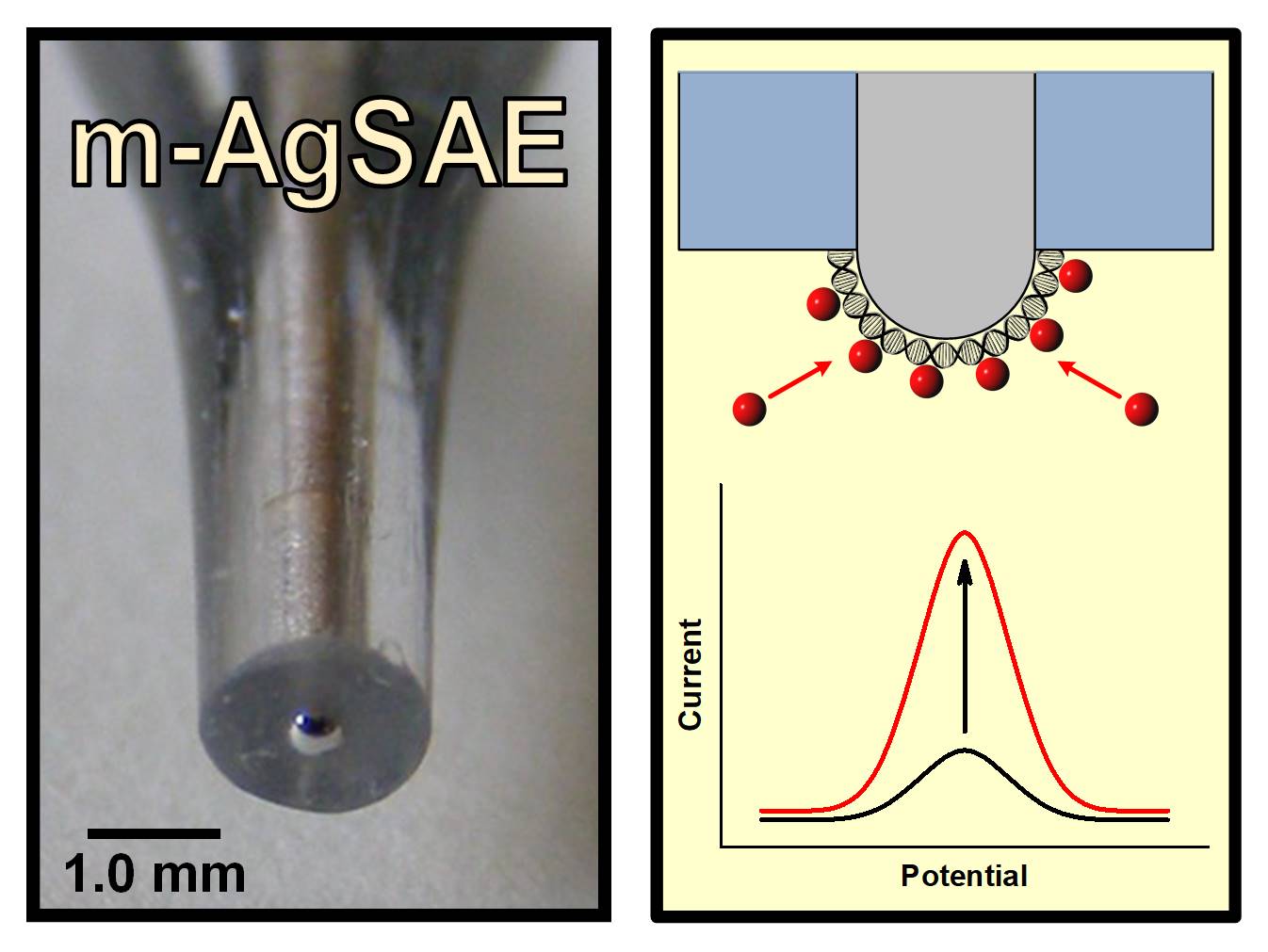
Mentors: Dr. Vlastimil Vyskočil, CUNI; Dr. David Pierce, UND
The goal is to develop novel electrochemical sensors utilizing a DNA layer immobilized onto a silver amalgam substrate, and then explore their application for determination of organic environmental pollutants that bind to double-stranded DNA to form a stable analyte–DNA complex.
Non-toxic electrodes based on silver amalgam (AgAEs) have been developed as viable alternatives to classical mercury electrodes. Mercury electrodes are unique because of their high sensitivity, reproducibility, and wide cathodic potential window; however, because of the toxicity concerns with mercury, their use is currently either regulated or even banned.
Very recently, we have designed a novel portable miniaturized electrode system (MES) based on an AgAE as the working electrode for voltammetric determination of electrochemically reducible organic compounds in small sample volumes. DNA-modified electrodes (DNA biosensors) are prepared by immobilization of DNA onto a suitable electrode substrate.
In the case of AgAEs, a DNA biosensor is prepared readily by immersing the electrode into a drop of the DNA solution. Such DNA biosensors can be used to develop highly sensitive analytical methods whereby organic pollutants (analytes) spontaneously adsorb to the double-stranded DNA structure (formation of a stable analyte–DNA complex) to increase the sensitivity of the determination. Moreover, using the above-mentioned MES, the entire analysis can be performed on-site.
Read DNA-modified Silver Amalgam Sensors Project
Development of Analytical Methods for quality control in recycling of industrial coolants

Mentors: Dr. Tomáš Křížek, CUNI; Dr. Alena Kubátová, UND
Goal of this project is to develop analytical separation methods for identification and determination of compounds present in industrial coolants before and after their recycling. The method will serve as a quality control tool in development and routine operation of a new electrodialysis-based recycling line in one of the Czech companies.
Coolants are routinely used across practically all fields of industry while only negligible part of the waste is recycled, mainly because of the high energetic demands of the recycling processes. Electrodialysis presents a promising new approach to recycling as it meets the environmental as well as economic criteria. Output of this technology is a mixture of glycols, free of other contaminants that enter the coolant during its manufacturing and use. To introduce and run such new technology, one has to be able to monitor composition of input and output material in order to evaluate the efficiency of purification process and quality of the recyclate.
Students participating in this project will gain practical experience with method development and validation in capillary electrophoresis and high-performance liquid chromatography as well as with sample treatment and pre-concentration techniques.
READ Development of Analytical Methods Project
Ultratrace Analysis of Environmentally Important Metals by Volatile Compound Generation Atomic Spectroscopy
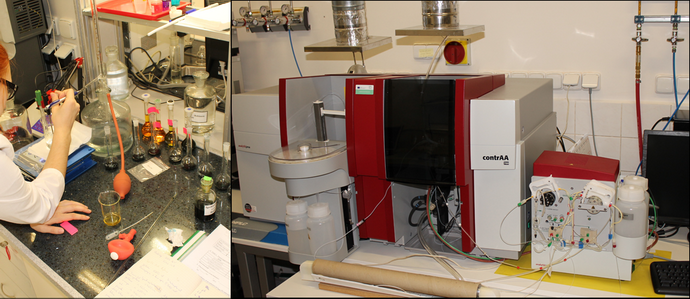
Mentors: Dr. Jakub Hraníček, CUNI; Dr. David Pierce, UND
The goal is construction, assembly and optimization of the improved units for flow injection electrochemical and UV photochemical generation of volatile compounds for ultra-trace elemental analysis by atomic spectroscopy (atomic absorption and fluorescence spectroscopy).
Vapor generation coupled with atomic spectroscopic methods has been a routine technique for determination of As, Bi, Ge, Hg, Sb, Se, Sn, Te, and Pb for several decades.
Furthermore, in recent years, the scope of volatile compounds generation has been expanded to include the determination of transition metals.
Arsenic, antimony, lead and cadmium are toxic heavy metals that tend to accumulate in living organisms. They are commonly used in up-to-date manufacturing, so their levels in the environment are gradually increasing; therefore sensitive and selective methods for their determination are desirable.
The principal advantages of gas phase sample introduction are in the analyte separation from the sample matrix and in a higher introduction efficiency compared to liquid nebulization. A conventional and widely applied approach to the generation of volatile compounds is the chemical reduction using NaBH4. However, a simpler alternative approach utilizing electrochemical or UV photochemical reduction could be used to avoid the use of a chemical reductant.
Read Ultratrace Analysis of Environmentally Important Metals Project
New Green Methodology Using Non-natural Amino Acid Catalysts
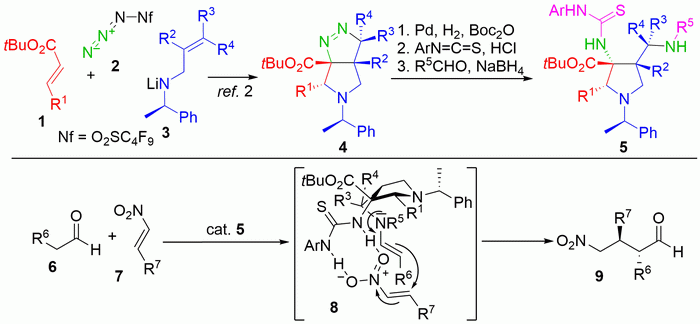
Mentors: Dr. Ullrich Jahn, IOCB; Dr. Mukund Sibi, NDSU
The goal is to develop new approaches to making unique chiral organocatalysts based on non-natural amino acids and their application in selected organic reactions.
Organocatalysis holds much promise for green synthesis of organic compounds with potentially interesting medicinal or materials properties. The use of expensive, toxic and environmentally problematic transition metal catalysts can thus be avoided. Most current organocatalysts are derived from naturally occurring amino acids, which are modified into species that are tailored to interact with the substrates by reversible chemical bonding and/or supramolecular interactions.
However, naturally occurring amino acids have several disadvantages for catalysis, since their enantiomerically pure forms are not always readily available, and they contain only limited functionality to allow tuning of catalytic efficiency.
Therefore polyfunctional amino acid-derived catalysts should be potentially much more valuable. We recently developed a synthesis protocol for such an amino acid in a single step by a new tandem conjugate addition/1,3-dipolar cycloaddition reaction giving new α,β,γ-triamino acid derivatives in enantiomerically pure forms. Applying them as bifunctional organocatalysts is quite attractive.
Read New Green Methodology Project
Biosorption Potential of Phototrophic Microorganisms
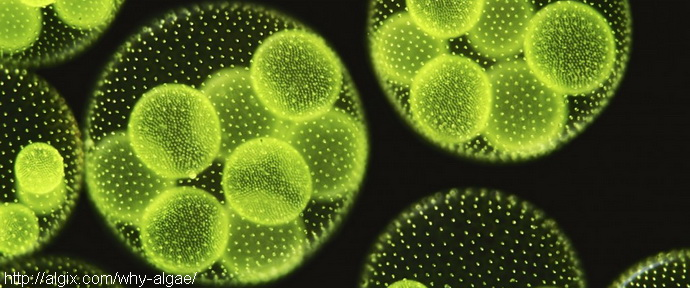
Mentors: Dr. Tomáš Brányik, UCT; Dr. Evguenii Kozliak, UND
The goal is the comprehensive understanding/description of adsorption mechanisms of microalgal biosorption. The study of adsorption of specific organic molecules to microalgal biomass will then enable effective application in environmental biotechnologies.
Biomass surface is rich in uronic acids, glucosamine and proteins, which can interact with dozens of structurally different compounds through hydrogen bonds, π-π* or hydrophobic interactions. Until now, the major part of research efforts has dealt only with the biosorption of small molecules (metals) onto the algal surface. We will focus on adsorption of organic molecules, for which only dyes and several phenolic compounds (xanthohumol, (+)-catechin, (-)-epicatechin, rutin and quercetin) have been documented. Adsorption of specific organic molecules may increase the nutritional and/or therapeutic value of microalgal biomass and enable its broader wider application in environmental biotechnologies.
Read Biosorption Potential of Phototrophic Microorganisms Project
Biodegradability of Polyurethane Foams with Adjustable Rate of Biodegradation
Mentors: Dr. Martin Halecký, UCT; Dr. Evguenii Kozliak, UND 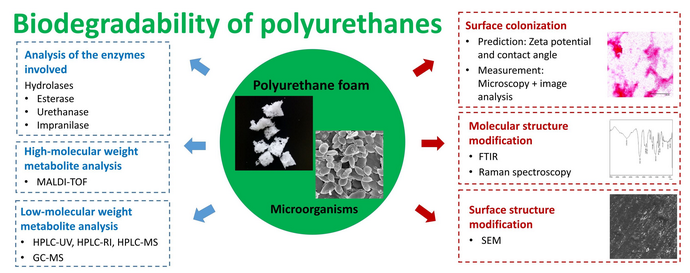
Biofiltration is one of the promising waste air treatment technologies. This project will evaluate biofilter operation while effectively mimicking conditions frequently encountered in industrial applications including the application of model pollutant mixtures and combined reactors, which are expected to be more efficient than its components, individual bioreactors.
This project will be conducted using lab-scale combined bioreactors during their long-term operation. Specific reactor configurations and specific pollutant compositions will be selected for this project on the basis of the actual experimental work occurring at the moment in our reactor lab, starting with a study of promising combined bubble column-biofilter system treating a mixture of hydrophobic and hydrophilic pollutants.
The bioreactors are equipped with advanced measurement and control systems allowing for semi-unattended operation. pH and dissolved oxygen level are measured automatically. However to obtain key information about degradation the monitoring of pollutants and metabolites in the incoming and outgoing gas and aquatic phases, monitoring of several specific parameters has to be conducted with more reliable offline methods. Based on these measurements, the process rate limiting step and mechanism will be elucidated ultimately leading to practical recommendations on industrial use of combined bioreactors.
Read Biodegradability of Polyurethane Foams Project
Role of Soil Bacteria in the Degradation of Lignin
Mentors: Dr. Ondřej Uhlík, UCT; Dr. Alena Kubátová, UND
Lignin is one of the most abundant biopolymers and a significant waste product from paper production. Thus it is essential to develop methods for its breakdown for production of biorenewable products. The goal of this project is to gain deeper insights into lignin biodegradation.
Due to it its complex structure and recalcitrant nature, lignin degradation is a major challenge. Given the structural similarity of lignin degradation intermediates to the known substrates of aromatic ring-hydroxylating dioxygenases, various taxa can be expected to be involved in lignin degradation, potentially with different mechanisms.
Although wood-rotting fungi are generally considered to be the only group of microorganisms
capable of complete lignin mineralization, bacterial degradation of lignin and its
constituents is also possible, yet it has been the subject of much less research than
fungal degradation. Within this project, students will be involved in bacterial characterization
methods including PCR and DNA sequencing to investigate bacterial strains involved
in lignin degradation.